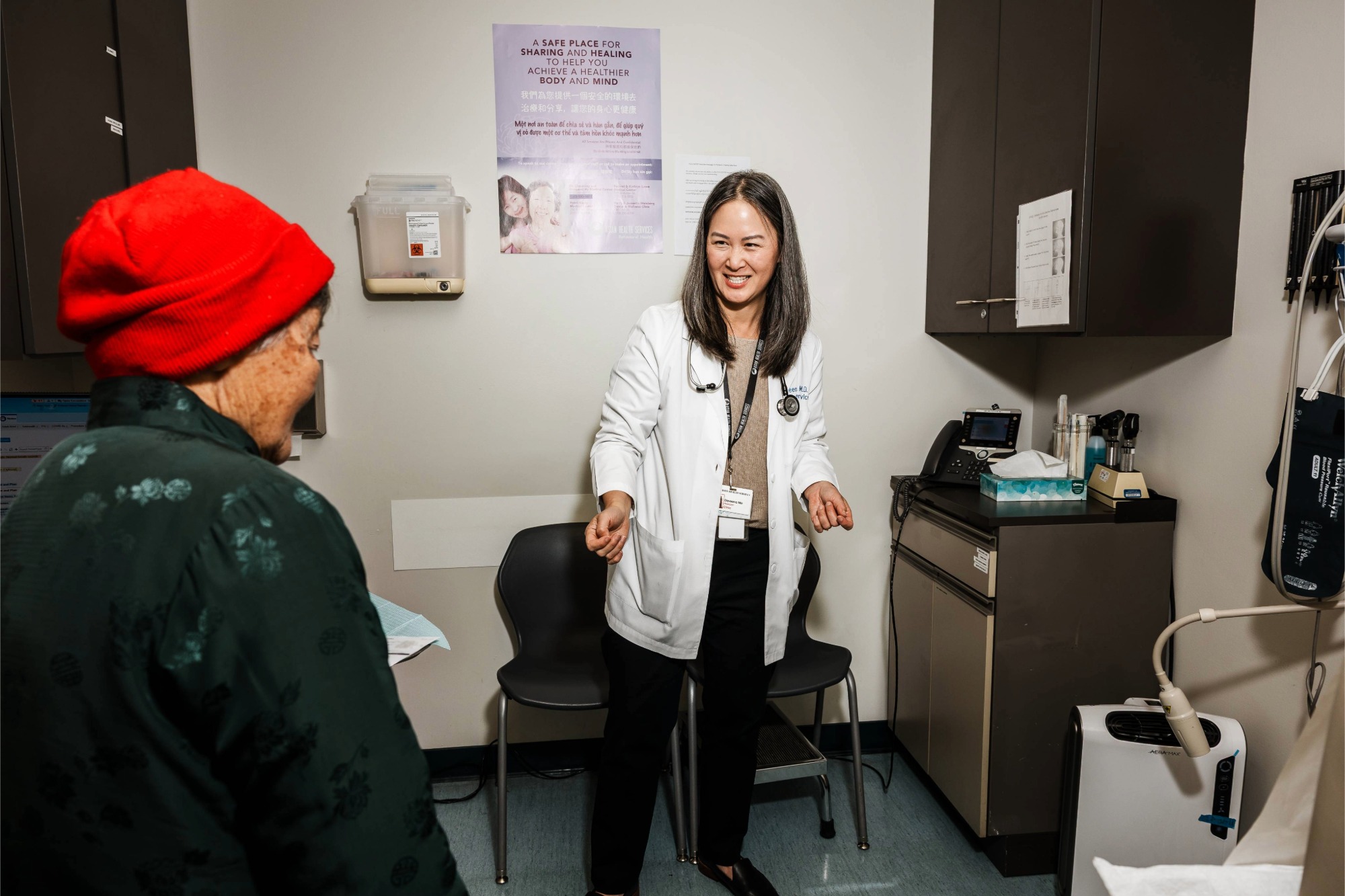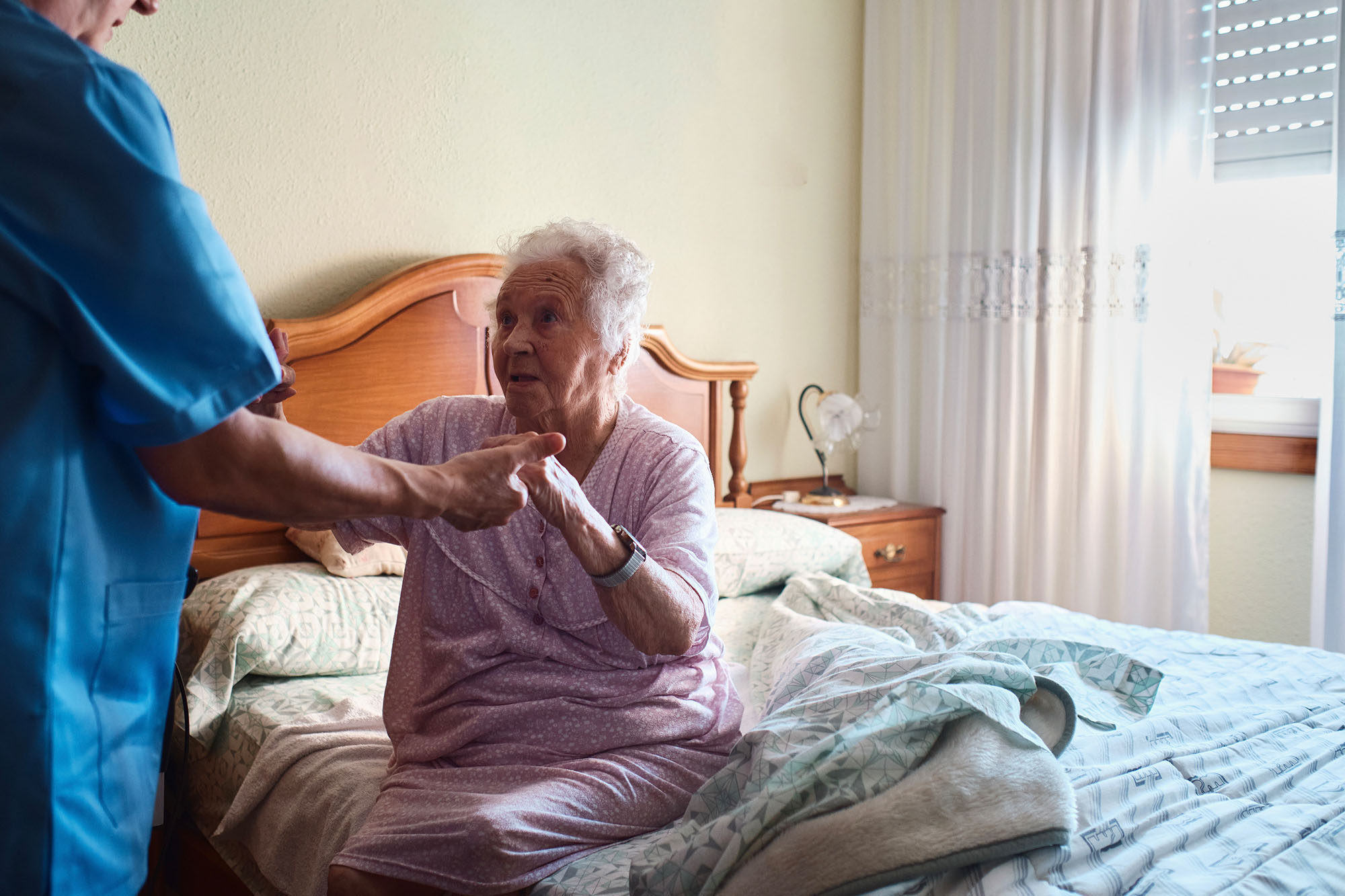B: Ensure Readiness (and Ongoing Development) of the PC Provider Organization
The palliative care (PC) provider organization has the staffing, services, and administrative capabilities needed to provide high-quality palliative care under a contract with a Medi-Cal managed care plan (MCP).
In this section:
- B1: Well-Prepared Interdisciplinary Team
- B2: Standardized Model, Processes, and Tools for Patient Care
- B3: Operational and Administrative Processes
- B4: External Awareness and Understanding of Palliative Care
- Progress in California
B1: Well-Prepared Interdisciplinary Team
Establish an interdisciplinary team (IDT) with appropriate clinical skills and training for provision of high-quality PC.
- Minimum: Clinical team should include physician / advanced practice nurse / nurse practitioner (as clinical director or provider of direct care, or both), nurse, social worker, and spiritual care professional. Ideally, all clinical team members have current professional certification for PC; at minimum, they have completed training in core PC clinical skills, including:
- Recognizing, assessing, and managing physical and emotional distress
- Discussing goals of care
- Conducting advance care planning and completing documentation (health care proxy, advance directive, POLST) where appropriate
- Connecting patients and families to other health care and social needs resources like substance use treatment, mental health care, housing, financial supports
- Enhancements: Include the role of community health worker or outreach specialist on the care team. Seek and secure organizational certification in palliative care from an accrediting body. Ensure current professional certification for PC for all IDT members where such certification exists for their discipline. Support additional training in:
- Communications skills and difficult conversations
- Anticipating and managing crises
- Identifying and managing support needs of caregivers and family members
Tools and Links
“Building and Supporting Effective Palliative Care Teams” toolkit includes job descriptions (available to members) and guidance about team roles and team health and resilience. Many videos and some documents are free and open to all (CAPC).
Palliative Care Playbook for Hospices includes a section on staffing with job descriptions, competencies, advice on skills development, and a self-assessment tool (National Hospice and Palliative Care Organization [NHPCO]).
Clinical Practice Guidelines for Quality Palliative Care, 4th ed. See “Guideline 1.1. Interdisciplinary Team” (National Coalition for Hospice and Palliative Care).
Online courses for building clinical skills (most are available to members only) (CAPC).
The Shiley Haynes Institute for Palliative Care offers live and asynchronous education for IDT members for their individual roles (California State University).
Courses and resources to help clinicians navigate tough conversations about serious illness (VitalTalk).
Requirements for Credentialing and Training for Palliative Care Providers (PDF) (CHCF compilation of MCP resources, also listed in Section A2).
B2: Standardized Model, Processes, and Tools for Patient Care
The provider defines a consistent but flexible patient-centered approach to assessing and addressing patient and family needs.
- Minimum: Identify standard approaches and tools for intake, initial and ongoing screening and assessments, development of the care plan, and documentation of care, with clear roles and responsibilities for different team members.
- Enhancements: Cross-train staff in different aspects of care to allow for more flexibility, capability, and capacity to identify and respond to patient needs. Define triggers for engaging other team members.
Tools and Links
“Measurement and Evaluation Tools” (National Palliative Care Research Center).
Clinical Assessment Tools section, in “Patient Identification and Assessment” (CAPC).
“Designing a Home-Based Palliative Care Program” (CAPC, available to members).
B3: Operational and Administrative Processes
The provider establishes clear processes that support team readiness, internal and external communication, and administrative functions supporting the MCP-provider partnership. The team refines these processes over time as the program grows and evolves.
- Minimum: Define team member roles and responsibilities, and clinical documentation expectations. Develop processes for team communication, internally for real-time clinical management and externally for communication with MCPs, referring providers, and other treating providers. Establish clear processes for managing MCP authorizations, submitting claims, and monitoring payments.
- Enhancements: Define standards for in-person care versus care by video or phone. Establish clinical quality targets. Define a routine process and forum for performance monitoring and ongoing improvement efforts.
Tools and Links
“Designing a Home-Based Palliative Care Program” (CAPC, available to members).
Palliative Care Playbook for Hospices includes sections on policies and procedures, documentation, and quality and data (NHPCO).
Metrics Balance Check Worksheet, a form to compile, organize, and balance PC program metrics along three types: structure, process, and outcomes (CHCF, also listed in Section E4).
Palliative Care Team Roles Descriptions (PDF) (CHCF compilation of MCP resources).
B4: External Awareness and Understanding of Palliative Care
The provider organization promotes its palliative care services, with separate materials and approaches for health care professionals (referring providers, other treating providers) and patients and families.
- Minimum: Create materials (both print and web-based) for both audiences that clearly describe (1) what palliative care is (using language that clearly differentiates PC from hospice), (2) how it can help, (3) information about the PC provider organization, and (4) how to seek services.
- Enhancements: Collaborate with MCP to conduct educational sessions with high-volume, high-value referral sources including hospital-based PC providers, hospital discharge planners and case managers, specialty care medical groups, and community-based organizations that serve people with serious illness. Distinguish palliative care and hospice in all aspects of the PC provider organization, including marketing, staff roles, and services. This could mean separate phone lines for palliative care and hospice, or even rebranding and renaming the organization.
Tools and Links
Palliative Care Playbook for Hospices includes a section on branding, messaging, outreach, and marketing (NHPCO).
Education and Engagement Materials for MCP Members and Families (PDF) (CHCF compilation of MCP resources, also listed in Section D4).
Education and Engagement Materials for Providers (PDF) (CHCF compilation of MCP resources, also listed in Section D2).
Provider education presentation template in PowerPoint format (ZIP) (CHCF compilation of MCP resources, also listed in Section D2).
Progress in California
A March 2021 survey by CHCF and the Coalition for Compassionate Care of California found 71% of provider organization respondents (22 of 31) with active MCP contracts are certified by The Joint Commission (TJC) or Community Health Accreditation Program (CHAP). An additional 13% (4) plan to seek accreditation soon. Of the MCP survey respondents, 53% (10 of 19) require TJC or CHAP certification.
“Offering palliative care has helped our agency grow as a whole. It helps that we can also directly bring on our own home health team or hospice.”
—Established program representative
Authors & Contributors
Hunter Gatewood
Hunter is a consultant and teacher in leadership and improvement with his company, Signal Key Consulting. His connection to palliative care stems from experience in social work case management with high-mortality populations, and more recently in serving palliative care providers in quality improvement and systems integration efforts.
Kathleen Kerr
Kathleen is a health care consultant in private practice in Northern California. Her work is focused on promoting the development of sustainable, quality palliative care programs, with particular emphasis on services that operate in rural areas and those that serve Medicaid enrollees.






